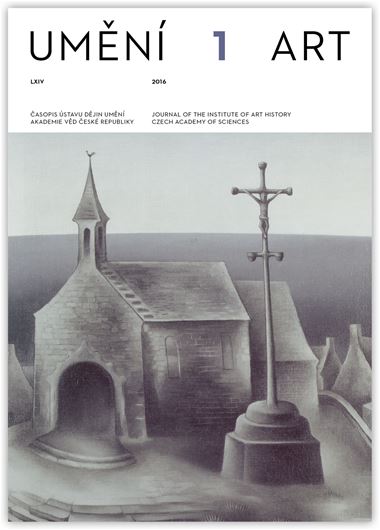Alena Kavčáková
Z pařížských dopisů Jana Zrzavého malíři F. V. Mokrému
A recently published collection of selected letters of Jan Zrzavý provides evidence of the role played by Zrzavý and F. V. Mokrý in putting together the programme of Alšová síň (Aleš exhibition hall), the new gallery that Výtvarný odbor Umělecké besedy (VOUB – the Visual Arts Section of the Arts Club) opened in April 1926. Artist Jan Zrzavý lived and worked in Paris from 1923 to 1927 and while there, and especially over the course of 1926, approached other artists working in Paris (e.g. Tsuguharu-Léonard Foujita, Henry de Waroquier, Raoul Dufy, Ossip Zadkine, Ivan Puni, Milan Konjović, Ivo Režek, Moissey Kogan, Grigorij Musatov, Boris Grigorjev) to seek their interest in exhibiting art in Prague and agreement to begin negotiations with VOUB for this purpose. Negotiations were then taken up by artist F. V. Mokrý on behalf of the gallery. For both artists Alšova síň symbolised the rebirth of VOUB and the promise of a ‘better future’. With regular exhibitions of good art by respected or talented young artists they sought to disrupt the focus on national work that VOUB had been set on to that time and that was preventing progressive French trends from having any impact. VOUB’s lack of interest in the emerging modern art in Paris, the centre of the art world, revealed it to be a traditionalist organisation within the Czech arts scene, and its conservativism made it the target of much criticism from supporters of its rival, Spolek výtvarných umělců Mánes (Mánes Association of Fine Artists). In order to overcome the perception of a sharp opposition in how the two associations related to modern art, Zrzavý and Mokrý tried to present the Prague cultural scene with a diverse array of distinctive forms of artistic expression that were freely finding a place for themselves in the development of modern art in Paris and in many European countries, not just in the west, but also in the north, east, and south. Modest financial resources, however, prevented this grand plan from being fulfilled. Exhibitions of the work of Foujita, Waroquier, Dufy and Zadkine never took place. The failure of this plan ultimately created the distorted impression that in the mid-1920s VOUB was primarily devoting itself to building stronger ties with southern Slav artists.
Full-text in the Digital Library of the Czech Academy of Sciences:
https://kramerius.lib.cas.cz/uuid/uuid:08f84acb-9964-457b-858f-53eba461c1ea
< back

